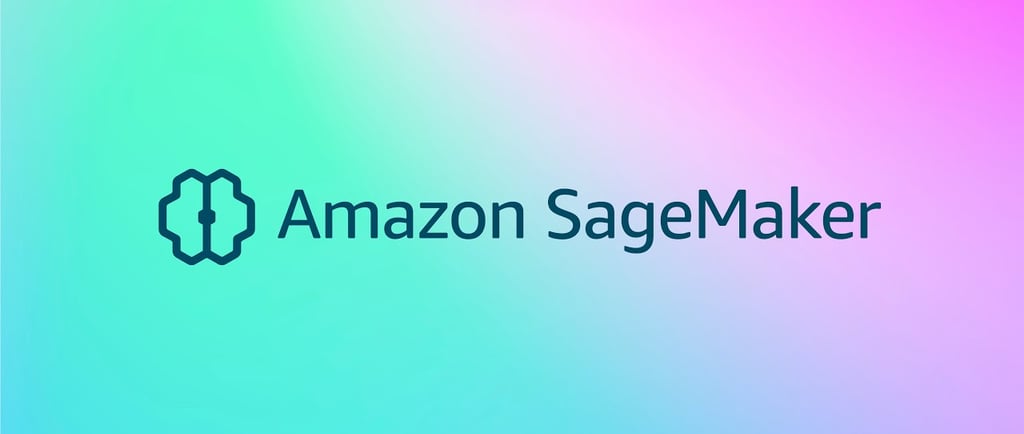Scaling AI training with AWS SageMaker HyperPod
AWS SageMaker HyperPod enhances large-scale model training resilience and efficiency with automated repairs, integrated workflows via SageMaker Studio, and high-performance storage solutions, streamlining distributed AI development and deployment at scale.
LLMTECH INFRASTRUCTUREARTIFICIAL INTELLIGENCETECHNOLOGY
Eric Sanders
6/20/20253 min read


Unlocking Scalable AI: How AWS SageMaker HyperPod Transforms Large-Scale Model Training
In the rapidly evolving world of artificial intelligence and machine learning, the ability to efficiently train and deploy large foundation models is no longer a luxury, as it is now more of a necessity. Organizations face immense challenges scaling these sophisticated models, balancing performance, cost, and manageability. Enter AWS SageMaker HyperPod: a game-changing innovation that elevates large-scale distributed model training by enhancing resilience, speeding up workflows, and simplifying infrastructure management.
Breaking Barriers in Distributed AI Training
Training foundation models at scale, those billion-parameter neural networks capable of understanding and generating human-like responses, demands massive computational resources and seamless orchestration of complex components. Until now, engineers and data scientists wrestling with multi-node training jobs have encountered significant hurdles:
Fault tolerance issues: Hardware failures or node disruptions meant restarting lengthy training processes, losing valuable time.
Complex distributed workflows: Managing parallel processes across many GPUs required intricate setups and constant monitoring.
Storage bottlenecks: Accessing large datasets and model checkpoints rapidly and reliably is critical during training but often causes delays.
AWS SageMaker HyperPod brilliantly addresses these challenges by combining automated repair capabilities, integrated development environments, and high-performance storage into one cohesive experience.
What is AWS SageMaker HyperPod?
SageMaker HyperPod is a distributed training infrastructure designed specifically for large-scale AI models. It orchestrates clusters of hundreds of GPUs with resilience and efficiency in mind, enabling researchers and developers to scale their models without the usual operational headaches.
Some of its key features include:
Automated repair and failover: When a node or process fails, HyperPod detects the fault and automatically repairs the issue or reroutes workloads, ensuring continuous training without manual intervention.
Seamless integration with SageMaker Studio: The entire distributed training and fine-tuning lifecycle can be managed inside a unified interface, simplifying experimentation, monitoring, and collaboration.
High-performance shared storage: Leveraging technology like Amazon FSx for Lustre, HyperPod provides ultra-fast access to large datasets and checkpoints, minimizing bottlenecks in data I/O.
Support for popular machine learning frameworks: It’s designed to work smoothly with TensorFlow, PyTorch, and more, making adoption straightforward for diverse teams.
By integrating these elements, HyperPod transforms the complexity of distributed training into a more reliable and productive process.
Streamlining Foundation Model Training
For data scientists and ML engineers looking to scale their AI projects, SageMaker HyperPod offers several valuable lessons:
1. Prioritize fault tolerance in distributed training
Model training jobs can run for days or weeks. Investing in systems that automatically detect and repair failures saves time and reduces costly interruptions. Imagine losing days of training progress because of a minor node failure—automated repairs avoid this pain.
2. Centralize workflows for productivity gains
Managing multiple moving parts—such as training scripts, hyperparameters, and resource monitoring—becomes much easier when unified under one platform. Tools like SageMaker Studio enable developers and researchers to focus on model quality rather than infrastructure logistics.
3. Ensure high-speed, scalable storage solutions
Large models require access to datasets and checkpoints at lightning speed. Without the right storage backends, I/O waits can become a hidden bottleneck that drags down overall training speed.
4. Leverage familiar frameworks with optimized infrastructure
Transitioning to new infrastructure can be daunting. SageMaker HyperPod’s compatibility with established ML frameworks eases the adoption curve and lets teams leverage existing skill sets.
AWS highlights the combined impact: “HyperPod significantly reduces model training time while improving the developer experience by automating fault tolerance, streamlining distributed workflows via SageMaker Studio, and delivering high-performance shared storage.”
Why Resilience and Efficiency Matter More Than Ever
In a landscape where foundation models are important to breakthroughs, from natural language processing to computer vision, speed and reliability are critical competitive advantages. Companies that can iterate and deploy faster will unlock new capabilities and business value more rapidly.
By removing infrastructure uncertainties, SageMaker HyperPod enables innovation without compromise. Teams can experiment with larger models, broader datasets, or sophisticated techniques without fear of disruption.
Where Do You Go From Here
If you are pushing the boundaries of AI research or deploying large models in production, consider how the principles behind SageMaker HyperPod may benefit your projects:
Could automated fault tolerance free your scientists from tedious manual restarts?
Would integrated workflows boost your team’s collaborative efficiency?
Are you currently limited by storage performance during dataset handling?
The future of AI development hinges on scalable, resilient infrastructure and one that empowers, not hinders, innovation. AWS SageMaker HyperPod stands as a compelling example of this future realized.
How might your approach to distributed model training change if failures no longer cost you days of progress?
What breakthroughs could your team achieve with a streamlined, automated, and resilient training environment?
Exploring these questions could be the starting point for unlocking the full potential of your AI initiatives.
Efficiency
Transform your workflows and reclaim your time.
Contact Us
Need A Custom Solutions? Lets connect!
eric.sanders@thedigiadvantagepro.com
772-228-1085
© 2025. All rights reserved.
